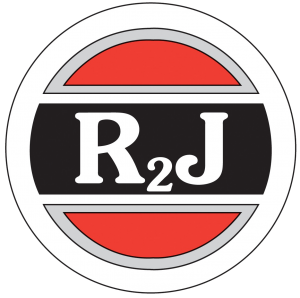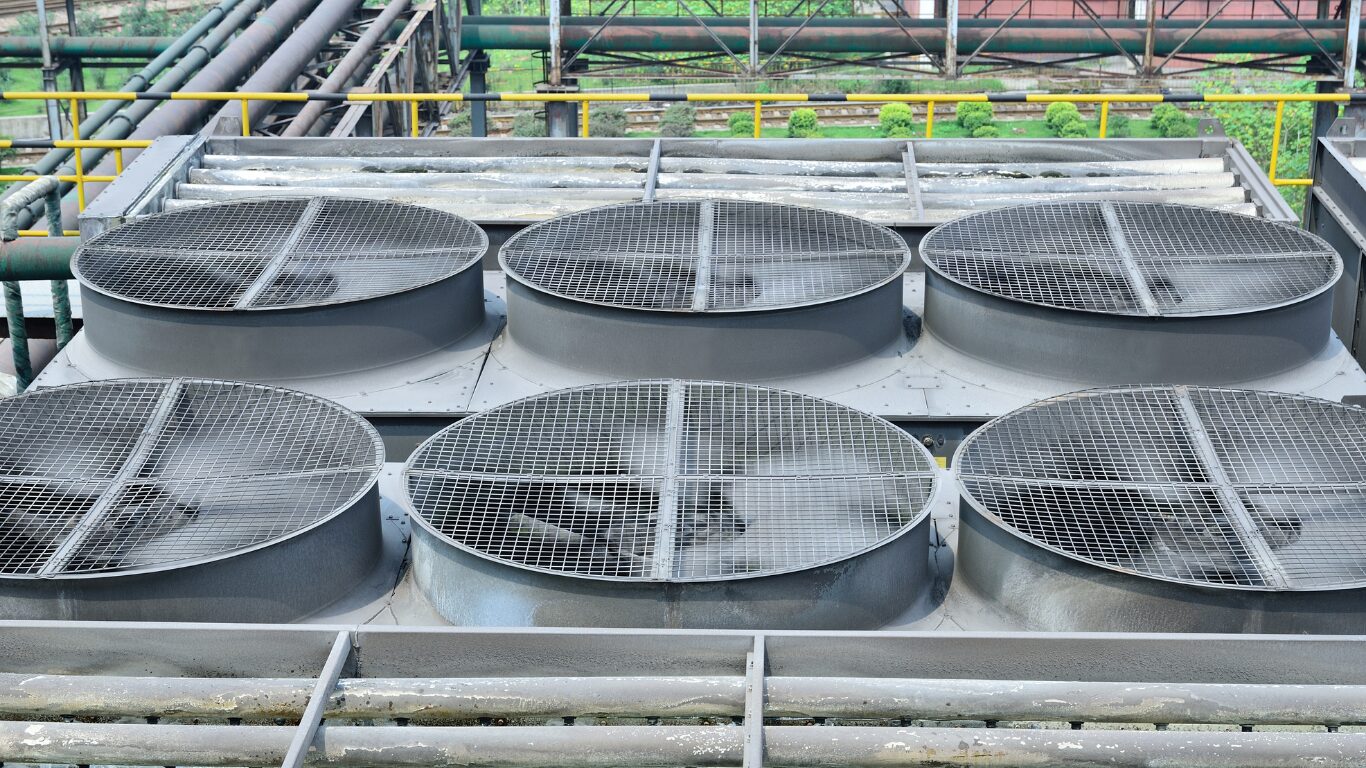Cooling Tower Cleaning: Process, Safety, and Benefits
Dec 27, 2022Cooling tower cleaning plays a critical role in keeping industrial and commercial systems reliable. Over time, cooling towers collect debris, scale, and biological growth that limit heat transfer and strain equipment. Without proper cleaning, these issues can spread through the system water, affecting pumps, fans, and other connected components.
Teams that make cleaning part of their regular maintenance routine not only extend equipment life but also protect employee safety and overall efficiency. In this guide, we’ll walk through how proper cooling tower cleaning is done, why it matters, and what best practices help facilities stay compliant and productive.
Why Cooling Tower Cleaning Matters
Every cooling tower operates in a demanding environment where air, water, and heat constantly interact. Over time, this mix encourages scale, corrosion, and biological growth that can compromise system performance.
Regular cleaning helps prevent:
- Fouling and scaling, which reduce heat transfer efficiency
- Corrosion, which weakens metal components and shortens system life
- Bacterial growth, including Legionella, which poses health risks
- Unnecessary energy use, as dirty systems must work harder to stay cool
OSHA recommends maintaining clean, disinfected towers to reduce these risks and protect the people who work around them. A consistent cleaning schedule safeguards both equipment and overall facility operation.
The Cooling Tower Cleaning Process
A proper cooling tower cleaning follows a clear, step-by-step process to protect both the system and the people performing the work. Before anything begins, operators should isolate the system water and ensure all electrical connections are safely shut down.
A typical cleaning process includes:
- Draining the basin and removing debris such as sludge, scale, and organic buildup.
- Rinsing and scrubbing internal surfaces to loosen deposits that limit water flow.
- Inspecting fill, nozzles, and fans for wear or restricted operation.
- Disinfecting and flushing the system to remove bacteria before returning to service.
- Documenting completion for compliance and future maintenance planning.
Following this procedure keeps the cooling tower clean, reduces downtime, and ensures reliable operation between maintenance cycles.
Inspecting the Tower Before and After Cleaning
A thorough inspection before, during, and after cleaning helps catch wear and damage early. Follow these steps:
Pre-clean checklist:
- Do a visual walkaround
- Photograph areas of concern
- Record system water condition
- Confirm lockout/tagout and PPE are in place
- Take water samples if needed
During cleaning:
- Monitor nozzles for clogs
- Check fill for tears or heavy deposits
- Watch pump and fans for unusual vibration or noise
- Note issues in limited-access areas
Post-clean verification:
- Ensure the basin is free of sludge and debris
- Test water quality
- Run pumps and fans under normal load
- Inspect for corrosion or leaks
- Document all findings with dates and signatures
We recommend keeping this documentation on file to track trends and plan service.
Common Issues from Neglected Cleaning
You’d think skipping tower cleaning just creates buildup, but no, it also affects every part of the system. When debris and biological matter accumulate, performance and reliability drop fast. Here’s what many facilities experience:
- Reduced cooling performance, as restricted flow limits heat rejection
- Higher operating costs, since pumps and fans use more energy to compensate
- Frequent breakdowns, caused by hidden corrosion or clogged components
- Health and safety concerns, with bacteria like Legionella spreading through mist or drift
- Compliance risks, when documentation or cleaning intervals fall behind OSHA recommendations
Teams that stay consistent with maintenance avoid these costly setbacks and keep their systems performing as designed.
Building an Effective Cleaning Schedule
A structured cleaning plan helps facilities maintain reliable operation and avoid unexpected downtime. Most teams benefit from a schedule that includes:
- Full cleanings twice a year, ideally before peak cooling season and after it ends
- Regular visual checks, watching for debris, scaling, or unusual water conditions
- Mid-season touch-ups, especially for towers operating in dusty or humid environments
- Routine documentation, recording cleaning dates, inspection notes, and test results
- Scheduled water sampling, ensuring treatment programs stay effective
Keeping detailed records of each cleaning session, inspection, and disinfection step is essential. These logs help track patterns, verify that procedures were completed correctly, and support OSHA compliance during audits. Aside from that, it also strengthens long-term planning by showing how your system responds over time.
To see how consistent care pays off, check out our post on tower upkeep practices.
8. Keeping the Cooling Tower Clean Between Services
Even between major cleanings, there are simple steps teams can take to keep towers running smoothly.
- Check and replace filters regularly to reduce debris buildup.
- Inspect the basin for sludge or algae, removing any deposits before they spread.
- Monitor discharge and system water, adjusting treatment if clarity or flow drops.
- Flush low-flow areas that tend to collect sediment or biofilm.
- Treat the water consistently to control scaling and bacteria growth.
For practical inspection tips, see our guide on cooling tower maintenance.
Supporting System Health with Water Treatment
Even the best cleaning plan needs the support of proper water treatment. It keeps the system balanced and prevents corrosion, scaling, and bacterial growth from coming back. Key steps include:
- Testing water quality regularly to ensure treatment programs remain effective
- Checking chemical feed systems and adjusting dosages as needed
- Inspecting filters and strainers to confirm they’re capturing debris properly
- Monitoring system water balance, including pH and conductivity levels
- Coordinating cleaning and treatment schedules so both processes work together
These practices help reduce fouling, extend equipment life, and maintain consistent cooling performance. Learn more in our guide on cooling tower treatment.
Professional Tower Cleaning Services
Some cleaning jobs are too complex or risky to handle in-house. Confined spaces, chemical handling, and deep cleaning all call for trained professionals who know how to keep the process safe and thorough. Working with experienced technicians ensures your system is cleaned properly, documented accurately, and ready for operation without unnecessary downtime.
Every facility faces its own cleaning challenges, but the right plan makes a difference. Let’s talk about how you can keep your towers cleaner, safer, and more efficient year-round.
Frequently Asked Questions (FAQs)
What does OSHA recommend for cooling tower cleaning?
OSHA recommends that facilities follow strict safety procedures, including the use of personal protective equipment and proper disinfection steps before and after cleaning. Teams should also document each task to ensure compliance and safety.
How often should cooling towers be cleaned?
Ideally, cooling towers should undergo regular cleaning at least twice a year: once before startup and once after the cooling season. Towers in dusty or high-load environments may need more frequent attention.
Why is disinfection important during tower cleaning?
Disinfection removes bacteria and biofilm that can lead to Legionella growth and system fouling. Completing disinfection after debris removal helps maintain clean water and prevents contamination from returning to the system.
What areas of the cooling tower should be inspected or cleaned?
During a thorough inspection, focus on key areas like the fill, nozzles, fans, and cooling tower basin. These components often collect sludge, scale, and deposits that can compromise flow and reduce efficiency.
How does professional tower cleaning extend system life?
Professional tower cleaning services help remove buildup that causes corrosion and scaling, both of which damage metal surfaces and shorten equipment life. A clean cooling tower also improves air circulation and overall performance.


